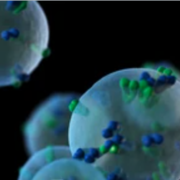
Research Brief 346: Mechanism of Cadmium-induced Neurotoxicity, Potential Treatment Revealed
![]()
|
|
|
|
Quan Lu Phone: 617-432-7145 Email: qlu@hsph.harvard.edu
|

Research Brief 346: Mechanism of Cadmium-induced Neurotoxicity, Potential Treatment Revealed
![]()
|
|
|
|
Quan Lu Phone: 617-432-7145 Email: qlu@hsph.harvard.edu
|